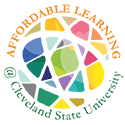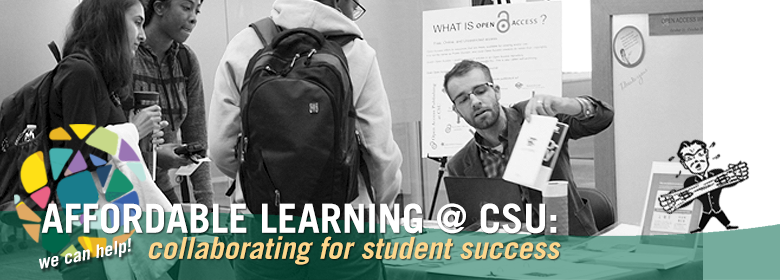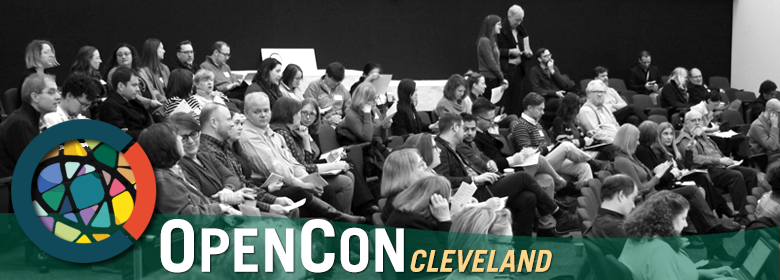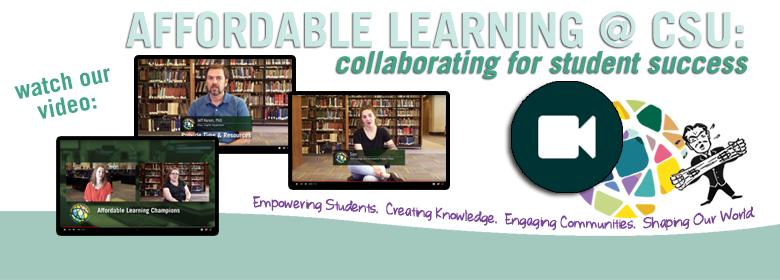
Affordable Learning @ Cleveland State University
Making higher education more affordable for our students, together.
The Michael Schwartz Library is committed to empowering students and faculty by providing access to resources in support of research and teaching. As an integral part of the University's mission to provide accessible, affordable, and Engaged Learning opportunities for all, we also support the development of open educational resources and work to promote equitable access to education for all.
Cleveland State University’s Affordable Learning initiative is a University-wide collaboration focused on making learning more affordable for students, while also promoting pedagogical innovation and improved student outcomes. Often, this work involves promoting, adopting, creating and publishing open educational resources, but also includes other affordability efforts.
Teamwork is essential to the success of this goal. Campus departments involved in this affordability initiative include the Michael Schwartz Library, CSU College of Law Library, Center for eLearning, Center for Faculty Excellence, Center for Instructional Technology and Distance Learning, and Student Government Association, among others, all working in partnership with the Open Textbook Network and OhioLINK.
- To remove barriers to student success by facilitating access to low- or no-cost textbooks and course materials.
- To encourage faculty to explore the benefits of adopting open educational resources in their efforts to improve both pedagogical approaches and student outcomes.
- To support faculty in the discovery, evaluation, creation, and dissemination of open educational resources for the benefit of students and educators at CSU and beyond.
Our Goals
Be inspired by what your colleagues are doing!
List of Previous Grant WinnersOpen Textbooks in Action:
Profiles of CSU Affordability Advocates
Impact of CSU's Affordable Learning Initiative
What is an Open Educational Resource (OER)?
Traditional scholarly publishing is often hidden behind technical, legal, or financial barriers or paywalls, even when it is publicly funded.
According to UNESCO, which coined the term "open educational resource" in 2002, an OER is "any type of educational materials that are in the public domain or introduced with an open license. The nature of these open materials means that anyone can legally and freely copy, use, adapt and re-share them. OERs range from textbooks to curricula, syllabi, lecture notes, assignments, tests, projects, audio, video and animation."
In addition to saving students money, these freely available resources can be modified and updated freely, giving faculty more flexibility and choice in the way they deliver their class material. Many institutions and grant foundations have seen the value of OERs and provided financial backing for their creation, leading to an exponential growth in their availability in the last five to ten years. See examples of OERs by visiting the Open Textbook Library, the OER Commons, or by exploring our research guides, linked below.
Related Resources from our Research Guides
- Open Educational Resources A guide for those interested in finding, using, or creating open educational resources.
- Public Domain and Open Access A guide for students or faculty who are looking for public domain or openly licensed content.
Want to get started now?
Authoring Open Textbooks by Melissa Falldin and Karen Lauritsen and published by the Open Textbook Network provides faculty authors with everything they need to get started writing their own open textbooks.
But you don’t need to write a textbook to reduce textbook costs!
Check out the Open Textbook Library to see if there is an open textbook already written in your discipline that you can adopt.
Reach out to your personal librarian to learn how the Michael Schwartz Library can support you.
*Indicates required fields.











